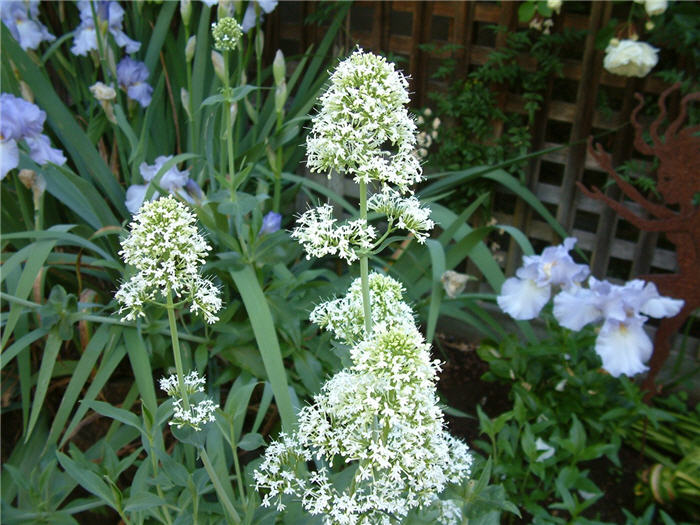| Botanical Name: Centranthus ruber 'Albus' | |
| Common Name: White Valerian; White Jupiter's Bea |

-
Anatomy
-
Culture
-
Design
Plant Type
Perennial
Height Range
1-3'
Flower Color
White
Flower Season
Spring, Summer
Leaf Color
Grey Green
Bark Color
n/a
Fruit Color
n/a
Fruit Season
n/a
Sun
Full, Half
Water
Low, Medium
Growth Rate
Moderate
Soil Type
Sandy, Clay, Loam, Rocky
Soil Condition
Average, Rich, Poor, Well-drained, Dry
Soil pH
Neutral, Basic
Adverse Factors
Invasive
Design Styles
English Cottage, Meadow, Mediterranean, Ranch, Spanish
Accenting Features
Showy Flowers
Seasonal Interest
Spring, Summer
Location Uses
Perennial Border, Shrub Border, Foundation, Parking Strip, Patio
Special Uses
Cut Flowers, Erosion Control, Mass Planting, Naturalizing, Small Spaces
Attracts Wildlife
Butterflies
Information by: Stephanie Duer
Photographer:
Photographer:
-
Description
-
Notes
Jupiter's Beard is a fast growing, hardy perennial that can reach 2-3' tall and nearly as wide, though it can spread farther both as the clump grows and through seed. Foliage is fleshy and grey-green. Tiny flowers form showy clusters along the tall stems in late spring and then sporadically all summer into fall; deadheading will prolong bloom. Flowers are lightly fragrant. 'Albus' has white flowers. A great cut flower. Use in perennial and shrub borders. Attracts butterflies and bees. Grows 24 to 36 inches tall and about 30 inches wide.
Easily grown in average, clay, or sandy, well-drained soils in full sun to part shade. Prefers slightly alkaline soils. Does well in poor, infertile soils where it usually grows in a more compact form. Freely self-seeds if conditions suit it, to the point where some might think it weedy. Promptly remove (shear if large planting) spent flower stems to encourage additional bloom and to prevent seeds from forming.